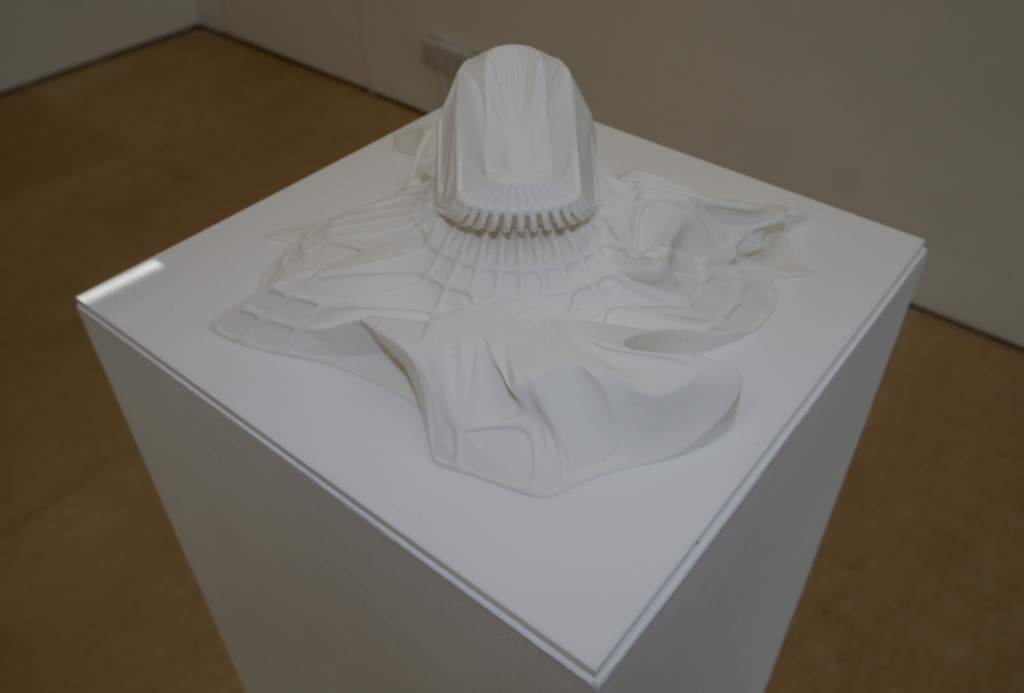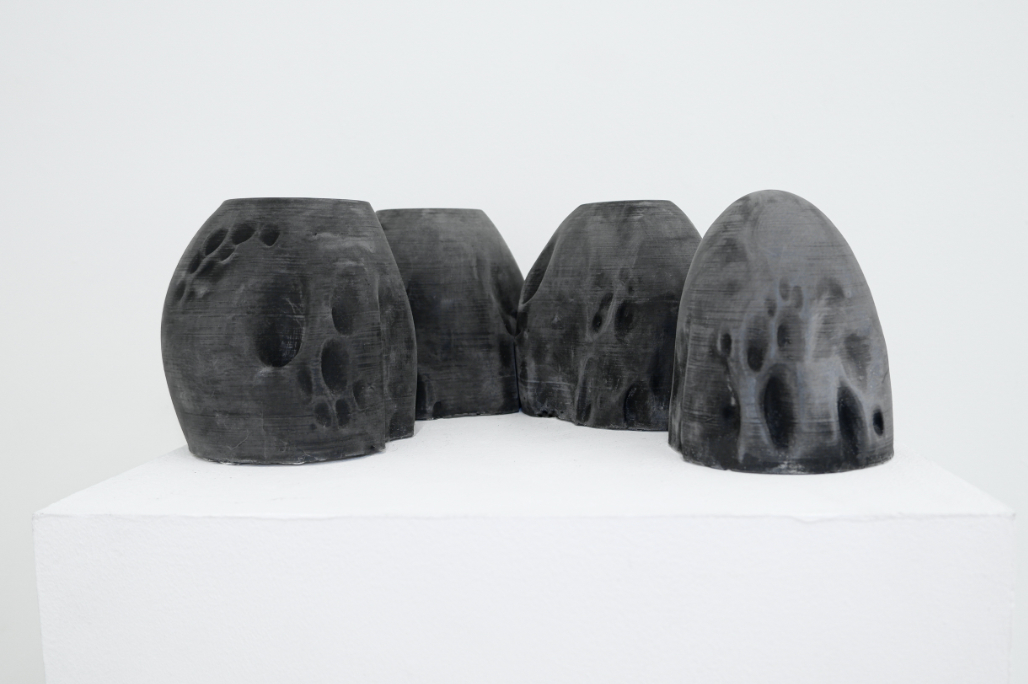Interview by Daniela Silva

In the dynamic and ever-evolving intersection of architecture, fashion, and digital art, Joshua Abramovich emerges as an emerging talent with a multifaceted approach. His work synthesises diverse creative disciplines, each informing and enriching the other. Abramovich’s introduction to the world of architecture began at the early age of 13 during a summer camp course where he first encountered SketchUp. This initial exposure ignited a passion for 3D modelling and rendering that would become central to his creative expression. The ability to transform imaginative concepts into photorealistic presentations captivated him, and he enthusiastically pursued this interest.
Parallel to his architectural explorations, Abramovich developed a deep appreciation for fashion, a passion nurtured by his parents, who introduced him to iconic designers such as Prada, Yohji Yamamoto, and Issey Miyake. This led him to a meticulous study of apparel, where he would analyse the seams and constructions of garments to understand their development. His work is characterised by an organic fusion of architecture, fashion, and digital art, each discipline informing and enhancing the others in a close dialogue. His approach to design has a significant emphasis on proportions and attention to detail. In fashion, this translates to considering how garments interact with the body and environment. At the same time, in architecture, it manifests in spaces that challenge conventional perceptions and encourage dynamic interactions.
His digital art is a conceptual blueprint for his fashion and architectural works, providing a realm where imagination can flourish free from physical constraints. This triadic synergy is evident in his innovative projects, such as the Inflatable Jacket, which integrates UV-printed graphics from his Genesis exhibition, and his architectural models that push the boundaries of traditional design paradigms. These projects showcase his unique approach and invite the audience to explore the possibilities of interdisciplinary design where the interplay of solidness and lightness, the seen and the unseen, form the core of his artistic exploration.
As he prepares to embark on the next phase of his career, Abramovich continues to push the boundaries of his disciplines, exploring new frontiers in digital art, fashion, and architecture. His vision for future cities and environments is one where organic shapes and unconventional materials create spaces as functional as they are aesthetically compelling.



For our readers who may be discovering your work for the first time, please share your journey with us, highlighting the passions and inspirations that fuel your unique work.
I am a designer primarily focused on architecture, fashion, and digital art. I am in my final year of undergraduate studies at the Rhode Island School of Design and recently completed a semester abroad at the University of the Arts London.
At 13, I took an architecture course at summer camp and learned the basics of SketchUp. From then on, I was enthralled with exploring the program and rendering software. The ability to 3D model and photorealistically present anything I imagined was, and still is, exhilarating. Outside school, I was spent designing, entering competitions, and attending university lectures. At 17, I was published in Paprika!, a bi-weekly newspaper led by graduate students at the Yale School of Architecture and Yale School of Art.
Regarding apparel, my parents introduced me to designers from an early age. Prada, Yohji Yamamoto, and Issey Miyake were among my favourites. In high school, I began researching labels and their stockists. I learned about avante-garde, niche, and emerging designers by scouring the internet. This curiosity continues to fuel my work; I often examine the inside seams of clothes to understand how they were developed. Given that I major in architecture, I make clothes in my dorm. In 2022, I won Prada’s Action in the Year of the Tiger competition, and my bag design was featured in a group exhibition in Shanghai.
Your artistic expression fuses architecture, fashion, and digital art. Could you explain how these distinct disciplines intertwine and influence your creative process?
I enjoy designing spaces and imagining how people will navigate within them. This translates to fashion; it would be nice if more clothing related to the environments around us, not just the photoshoot backdrop. Therefore, my architecture and fashion act as advocates for one another. Digital art is less restrained by materials. It is purely the concept and visual. Given this nature, digital art has more room for expression; it is the blueprint for my eventual fashion work. The triad of disciplines unites as world-building.
My approaches to design in architecture and fashion are similar, with a great emphasis on proportions. Changing dimensions by small increments is meticulous. Meanwhile, the outcome of each digital artwork could be clearer; exploring the unknown is exciting. In my Inflatable Jacket, I UV-printed the main graphic from the Genesis exhibition. In the near future, I plan to expand this integration of digital art into my architecture and fashion.
In your practice, where do you draw inspiration?
I observe what’s around me and mentally form connections between visuals, feelings, and concepts that resonate. It’s a bit like imagining scenarios when playing with toys. Since childhood, I’ve had an idea of the work I want to create. Now, I’m focused on learning and developing new techniques while expanding my ideas further. Some areas that captivate my interest are fantasy worlds, epic sagas like Star Wars, what designers wear to the studio, atypical imagery, conceptual graphics, ethereal painting, textiles, and sound production.
Solidness and lightness are common themes in my work. This stems from my appreciation for rough materials, like rocks, concrete, and stretched forms, achieved with fabric. The dichotomy also pertains to my interest in the physical world (the object) and the unseen (ideas, feelings, the afterlife).
As a student at RISD, the idea that those around me, from friends, classmates, and people walking about campus, will be at the forefront of their creative pursuits is often encouraging. Some peers whose work I enjoy are Cameron Lasson (furniture design), Cara Wang (illustration), Dominick Cocozza (painting), Eduardo Mautner (industrial design), Joyce Ho (graphic design), Lucian Cravens (illustration), Ruyi Xu (sculpture), Sam Mazzarino (industrial design).
Your signature aesthetic involves organic shapes and unconventional materials. Can you elaborate on how these elements reflect your vision for future cities and environments?
I love the softness and unevenness of subtle blobs. Their curves blur our understanding of when the floor becomes the wall and then the ceiling. Thus, the physical form obstructs our understanding of space. Similarly, non-linear planes can be achieved through tensile structures. Both fall within my aesthetic language and require uncommon materials and construction methods.
Today’s architecture pedagogy stigmatises any consideration of aesthetics as unintelligent. I agree with the critique of bourgeois design practices and pseudo-architecture by developers. However, my fascination with aesthetics is more in the realm of storytelling, like filmmakers, writers, or illustrators. Likewise, I hope that architects adopt the ideation process in fashion. Imagine buildings, districts, and cities designed like Paolina Russo or Hyein Seo developing a collection.
Ultimately, my architectural designs may cost excessive amounts. Affordable housing is essential to prioritise. Therefore, having a few built projects that act as studies or models for the future is okay.
With Genesis, you’ve made a bold entrance into the public domain. How did this exhibition confront and reshape conventional ideas of architecture and art?
Genesis means the coming into being of something. As my first solo exhibition, this marked the origins of my vision and design practice in the public realm. The featured works were developed through experimentation over the past couple of years.
Models of a synagogue, public toilets, and a concept building presented new architectural possibilities. House in the Mountains depicted a fictional residence in the snowy Alps. The video includes moments of inaccurate texture mapping, resembling nostalgic 2000s video games. Beyond the Grid, a surface extending and undulating from the ground challenges the linear grid, both the physicality of strict, vertical extrusion in design and the rigidness of our thinking.
Digital prints with hyper-conceptual visuals showcased aspects of human existence. In one, rocky forms emerge from a vein-like background. As you observe, faces appear, conveying the significance of individual perception in shaping our lives. It was nice witnessing how others perceived my work in a curated setting. Visitors were enthusiastic about the futuristic world and recognised a consistent aesthetic throughout the mediums.
Looking beyond Genesis, what new frontiers are you exploring? Please give us a sneak peek into the projects or concepts you’re currently developing.
I’ve developed some new digital artworks that I’m excited to share. A second exhibition is in the works. Also, I plan to design more clothes, perhaps a collection throughout the year.
What is more important: to take or not to take yourself too seriously to be creative?
I believe you should not take yourself seriously when trying to be creative. Being open to experiencing different media regardless of how silly or mature they appear (by conventional standards) is essential; you cannot create with a closed mind. At the same time, be determined about what you hope to achieve. The documentation and portrayal of your work are vital considerations.
One for the road… What are you unafraid of?
It challenges my conceptions of understanding others. I’m intrigued by what lores (pulls people towards and keeps them in) various ideologies, communities, and zeitgeists, such as lifestyles, religious convictions, worldviews, political affiliations, artistic movements, cultures, and subcultures.





